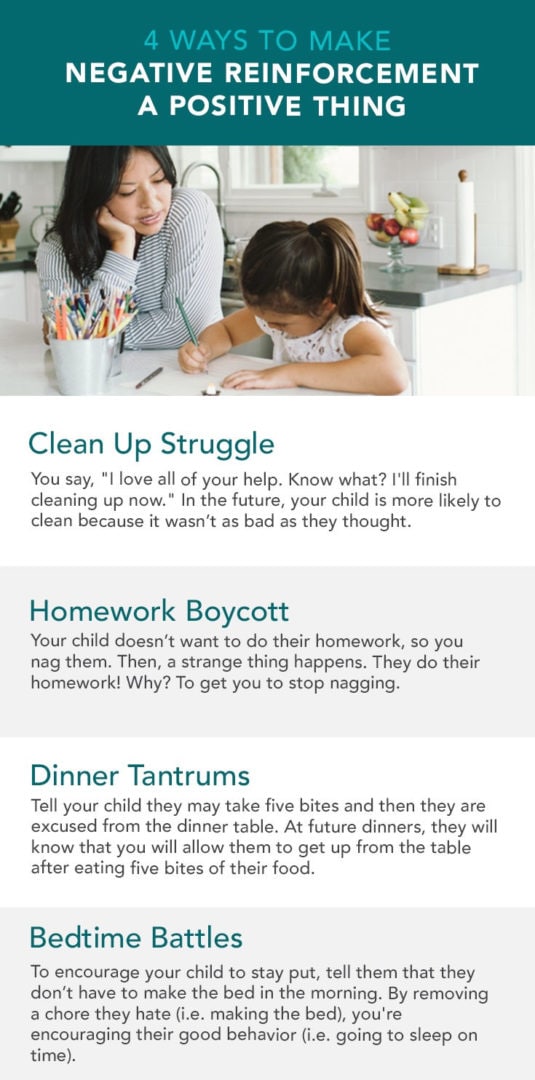Contrary to its name, negative reinforcement isn’t a bad thing. Rather than introducing something negative to deter bad behaviour (otherwise known as punishment), this theory of parenting removes something negative to encourage good behaviour. It’s easier to understand when you see some negative reinforcement examples.
Looking for a babysitter? Find sitters in your area now.
What is negative reinforcement?
First of all, it’s not punishment. You’re not doing something negative to the child to get them to behave a certain way. You’re doing the opposite — taking away something that they do not like (a “negative”). “When you use this procedure, you need to remember that it isn’t punishment,” says Corinna Bittle, a certified behaviour analyst and owner of bitKIDS Behaviour Consulting.
“Instead, it is removing something to increase a behaviour. You are going to do things such as removing extra work. This will be in response to a behaviour that you want to see more of, so you are reinforcing the behaviour you want to see more of in the future.” Because negative reinforcement is a reinforcement strategy, there aren’t any real worries with implementing it.
“Negative reinforcement is best used in close proximity to the behaviour,” says Amy Webb, who has a doctorate in human development and family sciences. Bittle agrees. “The trick with reinforcement is that you need to be able to figure out what your child wants and you need to make sure that you are giving it to them for those behaviours you want to see — not for the behaviours you want to reduce.”
Webb warns that there are instances that using negative reinforcement may accidentally give you the outcome you weren’t hoping for. “For example, a child whines and pouts when made to eat his vegetables so the parents remove the vegetables from his plate. This just reinforces the child’s desire not to eat vegetables.” Negative reinforcement isn’t going to be appropriate in every situation.
Stephanie Glover is the author and photographer behind A Grande Life. When she doesn’t have her camera in her hands, you’ll find her with a cup of coffee.
Read Next: 11 Ways Parents Can Alleviate Stress
